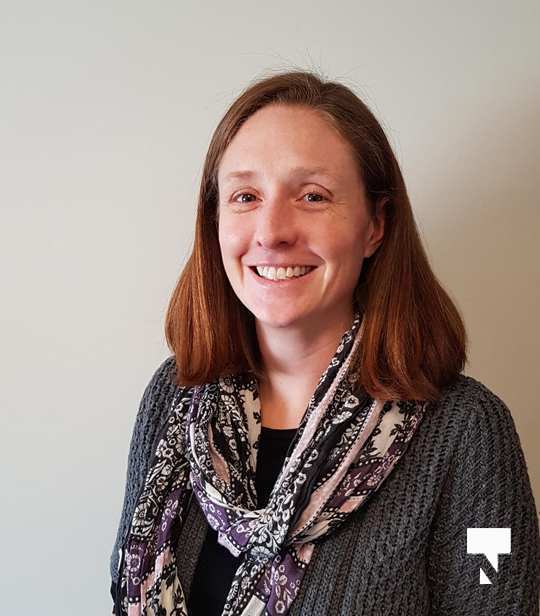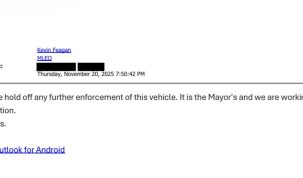By Cecilia Nasmith/Today’s Northumberland
Decreasing frequency of both the Haliburton Kawartha Pine Ridge District Health Unit online COVID-19 dashboard updates and in the regular media scrums held by Medical Officer of Health Dr. Natalie Bocking indicate a decrease in COVID-19 severity – if not a significant decline in numbers.
With figures not changing to any remarkable degree from day to day, Dr. Bocking explained at this week’s scrum, it makes sense to update the dashboard less frequently. Updating recently went to three weekdays instead of five, and she hinted that it might even be done less often – if warranted.
And the weekly media scrums that have only recently gone bi-weekly will – as of the next one, on April 6 – go to a monthly event.
The modest declines in case count that have been seen in recent weeks already show signs of slowing and possibly reversing. Given an even-more-transmissible subvariant and the lifting of public-health restrictions, Dr. Bocking acknowledged the possibility of a real rise in cases. And other indicators hint at an increase in respiratory viruses (like influenza) in general. In fact, the HKPR region has just had its first lab-confirmed case of Influenza A. But she reiterated a point she has made before.
“It comes back to where our goals are. With the emergence of Omicron, our goals changed and became really to blunt the impact of COVID-19 on our health-care system, and try to prevent as many people from going to hospital as possible,” Dr. Bocking said.
“From that perspective, I am not concerned about this recent uptick. We have good booster-dose coverage to prevent a significant increase in hospital admissions similar to what we saw at the peak of Omicron.
“I think it means we will see more cases and more transmission and some more hospital admissions, but not the overwhelming levels we saw earlier this year.”
For now, Dr. Bocking described the situation as one of on-going stability, giving three indicators.
Lab-confirmed cases remain steady at 15 to 20 a day. This takes into account only those people who qualify under revised provincial parameters even to be tested (such as health-care workers), she cautioned. It takes no account of anyone who may be positive but can’t access a test – not even those who test themselves at home and come up positive.
The health unit is currently monitoring only two outbreaks, one at a long-term-care facility and one in a congregate setting.
Finally, there have been only six hospital admissions across the HKPR jurisdiction over the last 14 days.
Dr. Bocking also gave two indicators of a slight increase.
Test-positivity rate, which had recently gone as low as 8%, is now almost 10%.
“Certainly not as high as in Omicron, when we were close to 20%, but increasing nonetheless,” she said.
And waste-water surveillance in Lindsay and Cobourg is showing increased viral levels.
“Again, not as high as in the Omicron wave, but an increase to what it was previously,” she stated.
“Historically, we have seen, when we have an increase in waste-water viral signal levels, to expect an increase or bump in cases, as it is a reflection usually of broader community transmission.”
These slight increases are consistent with what is being seen in a number of other health-unit jurisdictions, and they are not surprising in light of the lifting of public-health restrictions that result in an increase in the number of contacts so many people have in the community – each one a potential opportunity for transmission.
Dr. Bocking shared some information on the BA2 subvariant, which is part of the Omicron family. Some countries are calling it the Stealth Variant (though she can’t say how it got that name). Nevertheless, it is becoming the dominant variant in Ontario.
In the HKPR region, it accounts for fewer than 10% of diagnosed cases – though, in other health-unit jurisdictions, it accounts for 20% to 35% of cases.
What is known is that it is more transmissible than Omicron.
“That might seem hard to imagine, because Omicron also spread so much easier than previous variants, but BA2 does seem to spread even a little bit easier,” she said.
The good news is that it does not produce more severe cases of COVID-19 than any previous variant. And available data seem to indicate booster doses of vaccine continue to be very effective in preventing severe outcomes.
“I think we will likely see an uptick related to BA2, but not the same impact on our health-care system – the same level of severe outcomes, hospital admissions, ICU admissions – as we did with Omicron this past January,” Dr. Bocking said.
“Vaccination against COVID-19 continues to be one of the most important tools we have in our toolbox in both trying to prevent on-going community spread, as well as preventing severe illness from COVID-19 infections.”
And for the best protection, she added, booster doses are the most reliable. However, of the HKPR population aged 18 and older, only 60.8% have booster shots.
People see the Omicron wave subsiding and public-health restrictions lifting, Dr. Bocking noted, and wonder whether they should go for that third shot. But COVID-19 is not going anywhere, and her recommendation is to get that booster.
The mass-immunization clinics are no more, but shots will continue to be offered at health-unit offices in Lindsay and Port Hope. While these clinics were supposed to run through March, they will continue on Saturdays (from 10 a.m. to 1 p.m.) through at least April 10.
Mobile clinics will continue, targeted more to rural areas where there are more barriers to accessing vaccinations. And of course, pharmacies and some primary-care teams will continue to offer the shot.
School-based clinics will also continue, where some of the five-to-11-year-olds now qualify for a second shot.
Health Canada has approved Moderna for this age group, a two-dose series like the Pfizer pediatric – though the National Advisory Committee on Immunization continues to recommend Pfizer for this age group due to Moderna’s slightly higher risk of myocarditis in youth.
Dr. Bocking acknowledged that masking is no longer required in most indoor settings, but said that does not mean no masking. As well as being required in certain high-risk settings, masking is still practiced by health-unit staff offering clinical services.
“There’s no question this is a transition period, and there’s a spectrum of comfort in how people feel about masks at this time,” she said.
“It’s a very easy and effective tool to prevent transmission of COVID-19, and we know there is still COVID-19 activity in the community.”
Dr. Bocking encourages everyone to perform their own risk assessment, saying masks are still a smart idea for anyone who is at high risk from a severe case of COVID – and for anyone who lives with such a high risk case, as well as for those who count these high-risk individual among their friends, families and loves ones.
“I do foresee an on-going net-positive benefit from individuals wearing masks, and encourage people to be considerate and also consider those folks who are more vulnerable in the community that we are trying to protect.”
Her advice is to get vaccinated, stay home if you feel ill, get a rapid-antigen test and, if it reads positive, follow public-health guidelines about staying home and isolating.
“Continue wearing masks at those settings of highest risk, and continue all those other protections that hopefully are second nature by now, like washing hands, using hand sanitizer and covering coughs,” she listed.





















